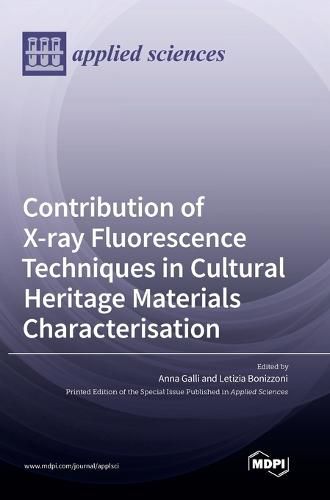Readings Newsletter
Become a Readings Member to make your shopping experience even easier.
Sign in or sign up for free!
You’re not far away from qualifying for FREE standard shipping within Australia
You’ve qualified for FREE standard shipping within Australia
The cart is loading…






This title is printed to order. This book may have been self-published. If so, we cannot guarantee the quality of the content. In the main most books will have gone through the editing process however some may not. We therefore suggest that you be aware of this before ordering this book. If in doubt check either the author or publisher’s details as we are unable to accept any returns unless they are faulty. Please contact us if you have any questions.
Archaeometry and cultural heritage have lately taken advantage of developments in scientific techniques, offering valuable information to archaeology, art history, and conservation science, involving both instrumental and non-instrumental approaches. Among the possible techniques, X-Ray fluorescence (XRF) has become one of the most applied techniques for cultural heritage elemental material characterization due to its user friendliness; fast, short acquisition times; portability; and most of all, its absolutely non-destructive nature. For this reason, besides being often a first choice for a preliminary overall materials investigation, XRF spectrometers and spectra data handling methods have continuously improved, giving rise to many variations of the same technique; portable spectrometers, micro-probes, and large area scanners are all variations of a very flexible technique. This Special Issue collects papers dealing with most of the analytical techniques related to XRF spectroscopy appropriate for applications to Cultural Heritage materials.
We dedicate this Special Issue to the loving memory of Professor Mario Milazzo, a pioneer of Archaeometry in Italy, awarded in 2002 the Gold Medal for Culture by the Italian President. He is remembered as a generous and pleasant man with an insightful, logical mind, who was able to find an appropriate joke for every situation. Many of us following his footsteps in the research field of applied physics for Cultural Heritage still appreciate his vision, teaching, and impact on our lives.
$9.00 standard shipping within Australia
FREE standard shipping within Australia for orders over $100.00
Express & International shipping calculated at checkout
This title is printed to order. This book may have been self-published. If so, we cannot guarantee the quality of the content. In the main most books will have gone through the editing process however some may not. We therefore suggest that you be aware of this before ordering this book. If in doubt check either the author or publisher’s details as we are unable to accept any returns unless they are faulty. Please contact us if you have any questions.
Archaeometry and cultural heritage have lately taken advantage of developments in scientific techniques, offering valuable information to archaeology, art history, and conservation science, involving both instrumental and non-instrumental approaches. Among the possible techniques, X-Ray fluorescence (XRF) has become one of the most applied techniques for cultural heritage elemental material characterization due to its user friendliness; fast, short acquisition times; portability; and most of all, its absolutely non-destructive nature. For this reason, besides being often a first choice for a preliminary overall materials investigation, XRF spectrometers and spectra data handling methods have continuously improved, giving rise to many variations of the same technique; portable spectrometers, micro-probes, and large area scanners are all variations of a very flexible technique. This Special Issue collects papers dealing with most of the analytical techniques related to XRF spectroscopy appropriate for applications to Cultural Heritage materials.
We dedicate this Special Issue to the loving memory of Professor Mario Milazzo, a pioneer of Archaeometry in Italy, awarded in 2002 the Gold Medal for Culture by the Italian President. He is remembered as a generous and pleasant man with an insightful, logical mind, who was able to find an appropriate joke for every situation. Many of us following his footsteps in the research field of applied physics for Cultural Heritage still appreciate his vision, teaching, and impact on our lives.